Aerospace industry
Aerospace industry, assemblage of manufacturing concerns that deal with vehicular flight within and beyond Earth’s atmosphere. (The term aerospace is derived from the words aeronautics and spaceflight.) The aerospace industry is engaged in the research, development, and manufacture of flight vehicles, including unpowered gliders and sailplanes (see gliding), lighter-than-air craft (see balloon; airship), heavier-than-air craft (both fixed-wing and rotary-wing; see airplane; military aircraft), missiles (see rocket and missile system), space launch vehicles, and spacecraft (manned and unmanned). Also included among its concerns are major flight-vehicle subsystems such as propulsion and avionics (aviation electronics) and key support systems necessary for the testing, operation, and maintenance of flight vehicles. In addition, the industry is engaged in the fabrication of nonaerospace products and systems that make use of aerospace technology.
Character Of The Industry
Technological progress is the basis for competitiveness and advancement in the aerospace industry. The industry is, as a result, a world leader in advancing science and technology. Aerospace systems have a very high value per unit weight and are among the most complex, as measured by the number of components in finished products. Consequently, it is economically and politically prestigious for a country to possess an aerospace industry. Among the world’s largest manufacturing industries in terms of monetary value of product output and employment, the aerospace industry is characterized by a relatively small number of large firms and numerous international partnerships at every level. For the major aerospace countries, their own military establishments and, in some cases, foreign militaries constitute the largest customers. The next most important buyers are the world’s commercial airlines, primarily American, European, and Asian–Pacific Rim carriers. Most general aviation (primarily private, business, and nonairline commercial) aircraft are sold in the United States, with Europebecoming a growing marketplace and special-use markets developing in the Middle East and Latin America.
Of the nearly 50 countries that have one or more aerospace companies, the United States possesses the world’s largest aerospace industrial complex. (While some companies are dedicated solely to aerospace, others are more diversified.) Although their own government is the major procurer of military systems, American firms are also the dominant supplier of both military and civil aerospace hardware to the rest of the world. Today, non-American companies seek a larger portion of the global market and challenge American dominance. Get unlimited access to all of Britannica’s trusted content.Start Your Free Trial Today Russia retains the second largest aerospace industry in the world. After the breakup of the Soviet Union in 1991, Russia acquired most of the highly competent Soviet design bureaus. Partnerships with American and European firms were initiated, and Russia entered Western markets for the first time. Western Europe’s aerospace industry has become a strong global player, with France, the United Kingdom, and Germany particularly active. Through the success of cooperative programs such as the Airbus line of commercial transports and the Ariane family of space launch vehicles, the European industry has gained considerable experience in the development and manufacture of almost the entire range of aerospace systems. Sweden’s industry is smaller than that of the other major European aerospace countries, but through its national policy of selective specialization it, too, has developed a high degree of competence.
In the Asia–Pacific Rim region, Japan has the leading aerospace industry, but—compared with the United States, western Europe, and Russia—its capabilities are still limited. Japanese companies also perform as key subcontractors to firms in the United States and Europe. China has built aircraft of Soviet design since the early 1950s, with indigenous design efforts generally confined to adapting Soviet technology. It is in the process of forging partnerships with a number of foreign ventures in both aircraft and spacecraft systems. The country also has developed space launchers, small satellites, and craft intended for manned spaceflight. Other countries with small but advanced aerospace industries are Argentina, Australia, Brazil, Canada, the Czech Republic, Greece, India, Indonesia, Israel, Italy, Netherlands, Poland, Spain, Switzerland, Taiwan, and Ukraine. Emerging industries exist in Austria, Belgium, Chile, Colombia, Egypt, Finland, Hungary, Iraq, Lithuania, Malaysia, New Zealand, Nigeria, Norway, Pakistan, the Philippines, Portugal, Romania, Singapore, South Africa, South Korea, Turkey, Uzbekistan, and Yugoslavia.
The interests of the U.S. aerospace industry are represented through the Aerospace Industries Association of America (AIA), an aerospace-industry-funded organization whose membership consists of the major companies in the field. The AIA provides a forum for technical and policy issues concerning the industry and serves as a lobbying agent for the common interests of its members. Its parallel in Europe is the European Association of Aerospace Industries (AECMA). Based in Brussels, AECMA interfaces with member countries as well as the European Union. In addition, Europe has several organizations at the national level. Other notable associations are the Society of Japanese Aerospace Companies (SJAC) and the Aerospace Industries Association of Canada (AIAC). The worldwide reduction in acquisitions of aerospace defense systems after the end of the Cold War in the early 1990s has prompted many manufacturers in the United States, Europe, and Russia to shift toward a more balanced mix of military and civil products. Some firms have adapted military aerospace hardware for civilian use or have sought nonaerospace markets for their expertise. To remain profitable, many companies have engaged in an almost continuous process of consolidations, mergers, divestitures, and international joint ventures and partnerships. Nevertheless, they all have been affected to some degree by the following developments: the ever-increasing costs of producing complex new aircraft and spacecraft, the globalization of the economy, the volatile level of government spending on defense-related projects, the state of commercial air travel and its needs, and the commercialization of space and the prospect of its low-cost access. These are the factors determining the size and scope of the aerospace industry today.
History
The first decade
The origin of the aerospace industry dates to 1903 when Wilbur and Orville Wright demonstrated an airplane capable of powered, sustained flight (see Wright flyer of 1903). The Wright brothers’ success was due to detailed research and an excellent engineering-and-development approach. Their breakthrough innovation was a pilot-operated warping (twisting) of the wings to provide attitude control and to make turns. Patents with broad claims for their wing-warping technology were granted in Europe in 1904 and in the United States in 1906. The French government was the first to negotiate with the Wright brothers for the sale of their patents for 1,000,000 francs, with a deposit of 25,000 francs for the option, which was later forfeited. The first recorded business transaction of the aerospace industry occurred in May 1906 when J.P. Morgan and Company in New York City paid the Wright brothers the forfeited deposit. The first sale of a military aircraftwas made on February 8, 1908, when the Wright brothers contracted to provide one Model A flyer (see Wright military flyer of 1909) to the Signal Corps of the U.S. Army for $25,000, with a $5,000 bonus should it exceed the speed requirement of 40 miles (65 km) per hour. The following year the aircraft successfully completed qualifying trials for completion of the sale, which included the bonus.
·

The world's first military airplane is demonstrated for the U.S. Army in 1909 by Orville Wright, shown here climbing into the pilot's seat. Wright and Lieutenant Frank Purdy Lahm are catapulted down a rail and launched into the air. The machine circles the field for 1 hour 12 minutes, setting a new world's record for time aloft with pilot and passenger.
In March 1909 the British entrepreneurs Eustace, Horace, and Oswald Short purchased a license to produce six Wright flyers and set up the company Short Brothers Limited on the Isle of Sheppey, establishing the world’s first assembly line for aircraft. In the same year the American aviation pioneer Glenn Curtiss joined the list of airplane producers and made the first commercial sale of an aircraft in the United States. In France, Henri Farman, Louis Blériot, Gabriel and Charles Voisin, and Léon Levavasseur entered the industry, and experimental groups started airplane production in Germany and Russia. When Blériot crossed the English Channel in July 1909 in his Blériot XI monoplane, the ensuing fame resulted in worldwide orders for more than 100 aircraft.
In 1909, when the Wright Company was incorporated with a capitalization of $1,000,000, the Wright brothers received $100,000, 40 percent of the stock, and a 10 percent royalty on every plane sold. The company developed extensive financial interests in aviation during those early years but, counter to the recommendations of its financiers, did not establish a tight monopoly.
By 1911, pilots were flying in competitive races over long distances between European cities, and this provided enormous incentives for companies to produce faster and more reliable aircraft. In 1911–12 the Wright Company earned more than $1,000,000, mostly in exhibition fees and prizes rather than in sales. French aircraft emerged as the most advanced and for a time were superior to those of competing countries. All planes built in this early period were similar in construction—wings and fuselage frames were made of wood (usually spruce or fir) and covered with a coated fabric.
World War I
France and Germany, both aware of the military potential of aircraft, began relatively large-scale manufacturing around 1909. By the outbreak of World War I in 1914, France had built a total of 2,000 airplanes, of which 1,500 were military; Germany ranked second with about 1,000 military aircraft; and Britain a distant third with 176. The United States lost its lead in aeronautics as the combined civil and military market for American airplanes was insufficient to permit the industry to grow significantly; only 49 aircraft were produced in 1914. In addition, patent rights remained a major difficulty for the industry. Recognizing a national need to advance aircraft technology independently, the U.S. Congress created the National Advisory Committee for Aeronautics (NACA) in March 1915. French industry, assisted by rapidly expanding facilities in Great Britain, carried the production load of the Allies during the war. When the United States entered the war in 1917, however, the French government requested that it furnish more than 4,000 planes for active service by early 1918. To meet the demand, including that of the U.S. Army, the U.S. government and American aircraft manufacturers entered into a patent-licensing agreement on July 24, 1917, and formed the Manufacturers Aircraft Association, which allowed its members the use of patents for a fixed royalty fee. Because American aircraft manufacturers and suppliers had no experience in large-scale production, the government enlisted automobile manufacturers to mass-produce engines and airplanes. For its own use the U.S. Army ordered the production of the two-seat British De Havilland DH-4 bomber and the American-designed Curtiss JN-4 Jennie trainer. By the end of the war 4,500 DH-4s had been built in the United States, 1,213 of which were shipped to Europe. Although American production was too late to matter militarily, by the 1918 Armistice American factories were capable of producing 21,000 planes per year. Worldwide 210,000 aircraft were produced from 1914 to 1918. In the United States the greatest success of wartime production was the very advanced 12-cylinder, water-cooled, 400-horsepower Liberty engine, developed for the DH-4.
Between the wars
The world’s aircraft industry fell into sharp decline following the Armistice. Within days most contracts were canceled. The wartime-oriented industry was overcapitalized, overstocked with raw materials, overorganized, and overmanned for peacetime needs. In Europe, national governments realized that maintaining a strong air force in case of war required an aircraft industry and, therefore, subsidized commercial air transportation. Military aircraft were adapted for passengers, and trainers and fighters were used for mail service. With the exception of providing subsidies for air mail, the U.S. governmentdid little initially to help its struggling industry, intervening only when the few remaining manufacturers were about to close, with an agreement in which the companies would use profits from government orders toward designing and building superior aircraft for the U.S. Army and Navy. In the 1920s Europeans and Americans competed in racing, which led to many refinements in design and performance. Notable was the general conversion from biplanes to the more streamlined monoplanes and the move to all-metal airframes, which took advantage of the new lightweight aluminum alloy Duralumin. The airframe revolution had actually begun during the war, in 1915, with the all-metal Junkers J-1 monoplane. The most successful postwar transport-aircraft designs were those of the Germans Hugo Junkersand Claudius Dornier and the Dutch Anthony Fokker; these aircraft
featured cantilevered wings, which eliminated external struts or braces.

German Junkers J-1 monoplane fighter prototype, 1915. The all-metal J-1 Blechesel (“Sheet Metal Donkey”) featured cantilevered wings, which eliminated external bracing.Hulton Archive/Getty Images
In 1927, following Charles A. Lindbergh’s solo flight from New York to Paris in the Spirit of Saint Louis, public enthusiasm for flying and aircraft expanded dramatically (a phenomenon dubbed the “Lindbergh boom”). Industry sales had more than tripled by the time the stock market crashed in 1929, when scores of aircraft companies, especially smaller new entrants, were forced out of business. Among an explosion of new ideas, one of the most fruitful was stressed-skin construction, in which the plane’s skin carried loads in conjunction with the support framework. This approach eliminated many internal trusses and braces within the wing and fuselage, contributed to a lighter and more efficient airframe design, and changed construction techniques. European manufacturers were responsible for many technical innovations, but, owing to the fierce competition among airlines in the United States, American aircraft producers incorporated them faster and more successfully in their products. At its outset the aircraft-manufacturing industry was virtually self-contained in the producer’s plant, with the exception of a few key products such as engines and tires. The majority of labour was associated with woodworking and sewing of fabric for the fuselage, wings, and empennage—skilled labour using limited tooling. The few machined parts and even components such as seats—devised by the airplane designers—were fabricated by specialized groups within factories.
In the 1930s, as aircraft became more sophisticated, the demand increased for machined parts, castings, forgings, and extrusions, which all required different machinery and different skills. The result was a major vertical expansion of aircraft businesses—i.e., the move to incorporate or control all levels of component manufacture and assembly within one organization. This took the form of either expanded internal plant capabilities or the development of a group of suppliers from whom specialized components such as instruments, radios, and passenger equipment were procured. The latter group became an intrinsic part of the industry, much as engine manufacturers had earlier. In 1929 United Aircraft and Transport Corporation (see United Technologies Corporation) was formed in the United States, merging a number of aircraft manufacturers and airlines under William E. Boeing’s chairmanship. United’s subsidiary, Boeing Airplane Company (see Boeing Company), produced its Model 247, an all-metal, twin-engine, low-wing monoplane first flown in 1933 and regarded as the first “modern” airliner. Although the aircraft was sought by most American carriers, Boeing restricted sales of 247s until the order for its sister company, United Airlines, had been filled. This prompted competing carrier Transcontinental & Western Air, Inc. (TWA), to persuade Douglas Aircraft Company to launch its DC (Douglas Commercial) series of aircraft in 1933. Passenger service became consistently profitable for airlines for the first time in 1935 with the introduction of the DC-3, which was sold to almost all airlines in the United States and became the standard in the world (including the Soviet Union and Japan).

Douglas DC-3 passenger aircraft, which first flew in 1935. From its introduction the DC-3 dominated the airline business until the end of World War II.© George Hall/Corbis
In 1934, under new U.S. antitrust guidelines, aircraft manufacture was divorced from air transport, and three distinct companies—Boeing Airplane Company, United Aircraft Corporation (later United Technologies Corporation), and United Airlines—emerged from the dissolved United Aircraft and Transport Corporation. The legal separation of aircraft manufacturing and airline firms in the United States had its derivative effect on the aircraft industry elsewhere. For example, to compete with American manufacturers, particularly in the American market, European plane makers had to convince their customers that they had no reason to favour indigenous airlines with better schedules or contract terms. In addition, as European airlines became competitive in international travel, they began to be subsidized by governments, which would have found the additional obligation of financing affiliated aircraft producers too burdensome. Consequently, since the 1930s the world’s aircraft makers have remained disassociated from their airline customers.

William E. Boeing testifying at a U.S. Senate hearing in February 1934. The following June Congress passed antitrust legislation, the Air Mail Act of 1934, that permanently divorced aircraft manufacturers from airline operators and forced the dissolution of Boeing's United Aircraft and Transport Corporation.© Bettmann/Corbis
During World War I Russian production had concentrated on large multiengine biplane bombers, few of which reached service. After 1923 the Soviet Union recognized the need for a broadly based air force. Initially planes were imported from Europe and the United States, but the need for aircraft that could operate under extreme weather conditions and from primitive airfields led to development of the indigenous Stormovik fighters about 1930. Although rugged, they did not match the German and Italian airplanes that they met during the Spanish Civil War. As a result of their designs’ failing expectations and their questionable political views, many key aircraft-design leaders such as Andrey Nikolayevich Tupolev and Sergey Pavlovich Korolyovspent years in exile or confinement during the 1930s and ’40s. The 1930s and ’40s were also the era of the “flying boat,” or Clipper (seeseaplane). Planes developed by Boeing, Martin, the Sikorsky division of United Aircraft Corporation, and Short Brothers carried up to 74 passengers across transoceanic routes. In the late l940s, however, the development of a new generation of long-range, pressurized-cabin, four-engine, land-based airliners negated the need for seaworthy planes.

Martin M-130 “flying boat,” China Clipper, passing over the partially completed Golden Gate Bridge in San Francisco, on its first day of commercial transpacific service, November 22, 1935.Courtesy of Pan American World Airways, Inc.
The aircraft industry expanded to include autogiros and eventually helicopters in the 1930s. The first practical helicopter, the German Focke-Wulf Fw 61, flew for the first time in June 1936. In the United States in 1939, Russian émigré Igor Sikorsky designed, built, and flew the experimental helicopter Vought Sikorsky VS-300, which used a single three-bladed main rotor for lift and a small vertical rotor mounted on the tail to counteract torque. With an order from the U.S. Army in 1944, Sikorsky’s R-4 became the world’s first production helicopter.

Sikorsky R-4, the world's first production helicopter, which served U.S. and British armed forces in World War II. An experimental version of the aircraft first flew in 1942.© Hulton-Deutsch Collection/Corbis
Progress also was made in the development of training systems for night and all-weather flying. In 1929 an electromechanical flight simulator was built by Edwin A. Link. The U.S. Navy placed the first large order in 1931 for the Link Trainer, which, with aircraft-specific changes, became the standard for highly sophisticated simulators.
World War II
Germany’s aircraft industry after World War I was heavily restricted by the Treaty of Versailles. In 1921–22 the constraints were eased, and a productive light-aircraft industry began to develop. When restrictions were basically abolished in 1926, a number of new ventures were formed; those which survived included such companies as Arado, Dornier, Focke-Wulf, Junkers, and Heinkel. When Adolf Hitler came to power in 1933, funds were channeled into the development of the German aircraft industry through these companies. Compared with the period 1927–31, when a total of 84 million Reichsmarks were spent, funding soared to 980 million marks in 1936 alone. By the start of World War II the German aircraft industry was the most advanced in the world. The biggest importer of German aircraft was Japan, whose aircraft industry was technologically far behind its European and American counterparts until the early 1930s. After that time a new elevation of Japanese industry was punctuated by the performance of Mitsubishi’s A6M Reisen (or Zero) fighter, which in the Pacific war was superior to its first American counterparts.

Japanese Mitsubishi A6M Zero fighter, which began production in 1940. Its excellent maneuverability and exceptional range allowed it to outperform all other fighters that it encountered in the first years of World War II.© Museum of Flight/Corbis
In 1938, alarmed by Germany’s conquests, the British and French started to order military aircraft from their own sources and from the United States, resulting in a new stimulus to American industry. After the United States entered the war in 1941, President Franklin D. Roosevelt ordered the domestic production of 20,000 military planes in 1942 and a doubling of production every year thereafter, this from a base of fewer than 6,000 planes a year. A total of 22,000 planes were built in 1942; by 1944 the annual rate had grown to 96,000, including several thousand delivered to the Soviet Union. From January 1, 1940, to August 14, 1945, the United States produced 300,317 military aircraft. Beginning in early 1942, factories ran 24 hours a day, six to seven days a week. By the end of 1943 the industry labour force had swelled to a high of 2.1 million workers, including tens of thousands of women. The Ford Motor Company plant in Michiganalone turned out 5,476 B-24 bombers in 1944–45. At its peak Douglas Aircraft Company’s production line built one C-47 military transport (the military version of the DC-3) every five hours. By the summer of 1944, 15 airframe builders were producing 23 types of combat aircraft.
To achieve this production level, facilities of existing plants were expanded, new facilities erected, nonaircraft producers (mainly automobile manufacturers) brought into the industry, qualified personnel recruited and trained, and new production processes developed. Nonaircraft producers obtained licenses to build entire products developed by the aircraft industry or acted as subcontractors for aircraft manufacturers. As a result, a revolutionary change in the technology of airframe production occurred, shifting from “job shops” with craft labour to assembly lines with workers of lesser skills. This necessitated greater standardization of parts and job processes because of the complexity of the product. For example, the 5.5-metre (18-foot) nose section of the Boeing B-29 bomber had more than 50,000 rivets and 8,000 different parts procured from over 1,500 suppliers. On the other hand, automobile-engine manufacturers were able to use existing skills to build aircraft engines along mass-production lines in already established factories. World War II began a differentiation among the aircraft producers. American companies such as Boeing, Martin, and Douglas, which had emphasized larger civil aircraft in the prewar years, became developers of bombers, as did Great Britain’s Vickers, Avro, Bristol, and De Havilland and Germany’s Dornier and Junkers. Focusing on fighterswere Curtiss, Grumman, Lockheed, and North American Aviation in the United States; Hawker and Supermarine in Britain; Messerschmitt and Focke-Wulf in Germany; and Mitsubishi and Nakajima in Japan.

Lockheed P-38 Lightning fighter-interceptor, which first flew in 1939. In continuous production during World War II, the P-38 also was used for bombing and photoreconnaissance missions in the latter part of the war. About 10,000 of the aircraft were built.Courtesy of Lockheed Corporation
As a result of the earlier political suppression of its top designers, when the Soviet Union entered into combat with Germany in 1940, it needed to procure American fighters. Production of American designs from American-furnished tooling was carried out in factories evacuated to the east of the Ural Mountains. By 1944, however, fighters from the Yakovlev and Mikoyan-Gurevich (MiG) design bureaus had proved to be competent native-design aircraft; they were mass-produced and served in the defeat of Germany. By the end of the war, airplane production in the United States and Britain had assumed the character largely maintained to the present day. Design, major assembly, and integration of systems in the makers’ factories rather than the complete manufacture of an entire vehicle became the emphasis. Development departments performed most of the engineering, and supplier specialists and vendors complemented and supplemented the aircraft producers’ manufacturing departments and equipment requirements. Only the United States and Britain retained advanced aircraft industries. What remained of the German industry after surrender was transported to the United States, Britain, France, and Russia. French industry had to restart completely, and the Soviet industry, although it survived the war, was not technically advanced. Japan was banned from resurrecting its industry until 1952. After the war, the Soviet factories and newly established design bureaus were relocated west of the Ural Mountains. Research activities at the Central Aerohydrodynamics Institute (TsAGI), the Aeroengine Institute (TsIAM), and schools such as the Moscow Aviation Institute were placed under the purview of the government’s Ministry of Aircraft Production (MAP). In 1957 MAP relinquished control of the schools. The design bureaus, given status during World War II, were headed by notables such as Aleksandr Sergeyevich Yakovlev, Artem Ivanovich Mikoyan, and Mikhail Iosifovich Gurevich. Prototypes were also built in these bureau plants, which specialized in particular classes of aircraft. In contrast to Western practice, responsibilities for aircraft types, military and civil, were specified explicitly by the government. (For additional information on the history of specific Soviet design bureaus, see Energia; MiG; Sukhoy; Tupolev.)
The advent of jets and missiles
The development of the jet engine about 1936–37 was the result of independent undertakings in Great Britain by Frank Whittle and in Germany by Hans von Ohain. The first successful test of a turbojetengine was conducted in 1937 in Britain, while two years later the German Heinkel He 178 became the first operational aircraft powered by a jet engine. Jet power rendered piston-engine military aircraft virtually obsolete following the end of World War II, meaning that the surplus situation of the post-World War I era was not repeated. Nevertheless, a major contraction of the industry occurred in both the United States and Britain; by 1949, in fact, the producers were essentially the same as those of the prewar period. The Korean War saw use of the residuals from World War II, with the exception of two early jet fighters, the Lockheed P-80 and the North American Aviation F-86. Their power plants were furnished by Westinghouse, General Electric, and the Pratt & Whitney division of United Aircraft Corporation. The postwar “Century” series of fighters (i.e., fighters from various companies having an “F-” designation of 100 or higher) stressed supersonic performance, and the first production aircraft capable of flying supersonically for a sustained time was the North American Aviation F-100. Its several innovative characteristics included the use of titaniumin the airframe because of the metal’s lightness, strength, and heat resistance (see titanium processing: Aerospace applications).

North American Aviation F-86 jet fighter, which became operational in 1949. During the Korean War F-86s were pitted against Soviet-built MiG-15s in history's first large-scale jet fighter combat.United States Air Force Museum
The Soviet Union entered the jet aircraft field using conventional airframes and either German Junkers Jumo axial-flow jet engines or British Rolls-Royce Nene centrifugal-flow engines. The first all-new Soviet jet aircraft, using pirated copies of the Nene that had been upgraded by the Klimov plant, was the MiG-15, which began deliveries to front-line fighter units in 1949. More than 15,000 aircraft of this type were built, including those produced in Soviet bloc countries. The MiGdesign bureau became the sole producer of Soviet fighters for many years, while the Yakovlev bureau developed several radar-equipped all-weather interceptors (such as the Yak-25, of which some 10,000 were produced). The Tupolev bureau was responsible for all bombers and civil jet transport planes. By 1958, combat aircraft worldwide had largely achieved supersonic breakthroughs, and a new breed of fighters emerged. Although, with time, the Soviet Union developed larger and faster fighters, initial versions were lacking in performance and weapons capacity. In Britain in the 1960s, Hawker Siddeley Aviation worked on a new type of jet fighter, the Harrier. Adjustment of the angle of the engines’ nozzles allowed the aircraft to take off and land without a runway—the vertical/short-takeoff-and-landing (V/STOL) concept. For the American market, the Harrier was licensed by McDonnell Douglas and produced for the U.S. Marines.

AV-8 Harrier V/STOL jet fighter, produced for the U.S. Marines, 1983. Developed by Hawker Siddeley Aviation (later part of BAE Systems), the original model first flew in 1966. Adjustable engine nozzles allowed the Harrier to take off straight up or with a short roll.© Francoise de Mulder/Corbis
Immediately following World War II, because many veterans wanted to continue or learn flying, American light-plane production soared—33,254 aircraft were sold in 1946, a 455 percent increase over the last prewar sales figures. Although prospects seemed promising, rising retail prices for aircraft, high operating costs for the owner, and other factors caused the market to narrow, and by the mid 1950s only the three light-aircraft industry leaders—Beech, Cessna, and Piper—remained major forces. With the advent of the Cold War and as the military’s transition to jet aircraft moved into high gear, a new opportunity arose—the development and production of guided missiles. During World War II German researchers had pioneered antiaircraft missiles, submarine-launched solid-fuel missiles, and surface-to-surface missiles, of which the V-2, with a top speed of 5,000 km (3,100 miles) per hour and a range of 320 km (200 miles), was the greatest achievement. The German developments and the researchers themselves provided the foundation for research and development by the victorious countries after the war. Initial postwar missile production began in the early 1950s. The first generation included artillery-like battlefield weapons, antiaircraft missiles, pilotless tactical bombers, and air-launched weapons, with increasing competition between the United States and the Soviet Union. Between 1955 and 1958 the United States worked on no fewer than nine missile programs, including ground-to-air defensive systems and pilotless bombers, both of which were also emphasized in Europe. While cooperative efforts existed between Britain and the United States, both Britain and France developed strong independent programs.
Despite the claim of American aircraft manufacturers that they were best qualified to produce missiles, they were faced with significant competition. Nonairframe producers, particularly companies in the electronics field, were considered by the federal government to be as technically well qualified to produce missiles as companies with years of experience as aircraft manufacturers. Thus, the new dependency on electronics technology swept away an important barrier to entry into the production of military aerial vehicles. Completely new facilities were required, and the labour force, already changing as the result of the transition to jets, became increasingly composed of highly skilled scientists, engineers, and technicians. Nonetheless, the traditional aircraft companies were successful in responding to the new technological challenges and the competition. This was attributable to their already having a significant assemblage of top research-and-development personnel and an established position in handling government business. By 1959, of the 16 companies that dominated the U.S. missile business, eight—including the six largest—were traditional aircraft firms. Of the remaining eight, six were electrical and electronics manufacturers, one an automobile manufacturer, and one a subsidiary of a rubber company.
The space age
Both the Soviet and the American space industries had much the same origins and impetus. The development of intermediate-range and intercontinental missiles provided not only the critical electronic technologies but also the rockets necessary to boost small payloads into orbit. Thus, the launch of Sputnik in 1957 signaled not only Soviet technical leadership in a new field but also the capability and extent of Soviet large-missile development and production. This leadership persisted into the era of manned spaceflight, and, exploiting a minimalistic but sophisticated approach to technology, it continued in the pioneering era of space vehicles and space stations. In the military use of space, the United States and the Soviet Union quickly turned to photographic reconnaissance from satellites, from which the film was recovered by means of reentry vehicles parachuted to the Earth. Their highly successful programs, including the U.S. Air Force’s Corona program, which flew more than 200 camera-carrying satellites, were the forerunner of higher-resolution imaging systems as well as infrared systems for the sensing of missile launches and other phenomena, with the gathered data relayed electronically to the ground. The techniques developed for the programs were later translated into new government and commercial remote sensing applications, primarily for atmospheric, weather, and Earth-resource investigations. In 1958, in a program called Project SCORE, the U.S. Air Force launched the first low-orbiting communications satellite, premiering the transmission of the human voice from space. Others followed, initiating a rapidly growing national and international telecommunications satellite industry (see satellite communication).
·

·

American-built Telstar 1 communications satellite, launched July 10, 1962, which relayed the first transatlantic television signals.NASA
Soviet Molniya 1 communications satellite, one of a series deployed beginning in the mid-1960s.
In 1958 in the United States, the National Advisory Committee for Aeronautics was succeeded by the National Aeronautics and Space Administration (NASA), and the Mercury manned spaceflight program was initiated. In 1959, to reflect the changing nature of the industry, the U.S. Aircraft Industries Association (formed in 1919 as the Aeronautical Chamber of Commerce of America to promote American civil aviation) changed its name to the Aerospace Industries Association (AIA). The Soviet Union, nevertheless, held manned space leadership, and on April 12, 1961, cosmonaut Yury A. Gagarin, aboard Vostok 1, completed one full orbit of the Earth to become the first human being in space. Within two months, U.S. President John F. Kennedy announced the goal of the United States to land people on the Moon and to return them safely to the Earth before the end of the 1960s. In preparation for the lunar landing, NASA undertook the two-person Gemini spacecraft and recovery project with McDonnell Aircraft, which had been the prime contractor for Mercury, thus extending its role in the space program.
·

·

Yury A. Gagarin (left), the first human to travel into space, and Sergey P. Korolyov, Soviet rocket scientist, 1961.
The Gemini program was conducted between 1964 and 1967 to give NASA engineers and astronauts information about spacecraft maneuvering, rendezvous, and ground control and about human performance in microgravity, in preparation for the Apollo voyages to the Moon. This video shows a Gemini spacecraft launch and booster separation. A Titan II rocket, a modified version of a rocket designed to carry nuclear warheads, lifts the spacecraft off the ground. Once the craft has cleared the Earth's atmosphere, the rocket is jettisoned, and it falls back to Earth.The Gemini craft was an enlarged version of the Mercury capsule and measured 5.8 metres (19 feet) long and 3 metres (10 feet) in diameter.NASA
NASA conducted many in-house research-and-development projects at its numerous space centres. The final development and production of flight hardware for the subsequent Apollo program, however, was carried out by a few prime contractors and elaborate networks of subcontractors and suppliers in virtually every part of the United States. For example, Grumman Aircraft produced the Lunar Modules, the actual vehicles to land on the Moon, and North American Aviation built the Command and Service modules, which remained in lunar orbit during the landings. Boeing, North American, and McDonnell Douglas each served as a contractor for one of the three stages of the Saturn V launcher, while the main engines for all stages were supplied by Rocketdyne, then a division of North American Rockwell. The number of personnel involved in the U.S. space program reflected intense activity in the industry, increasing from 36,000 in 1960 to 377,000 by 1965.
·

·
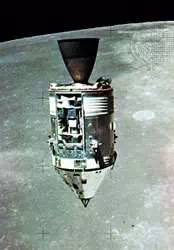
·

Apollo 11 lunar module Eagle with its four landing-gear footpads deployed. This photograph was taken from the command module Columbia as the two spacecraft moved apart above the Moon.NASA
Apollo 15 Command and Service modules in lunar orbit with the Moon's surface in the background, as photographed from the Lunar Module. The Scientific Instrument Module (SIM) bay can be seen on the front of the Service Module.NASA
Apollo 15 spacecraft during liftoff from Cape Kennedy, Florida, U.S., atop a Saturn V three-stage rocket, July 26, 1971. A camera mounted at the mobile launch tower's 110-metre (360-foot) level recorded this photograph.NASA
In the early 1970s, following on the success of Apollo, NASA strove to sustain its manned space program with the development of a reusable space transportation system, or space shuttle. In initiating the project, it again distributed industrial participation throughout the United States, under the control of its own centres. Because the shuttle would have the characteristics of both an airplane and a spacecraft, NASA gave its Langley Research Center (with a long history as an aeronautical laboratory) the responsibility for the vehicle’s aerodynamic design, in support of the agency’s lead facility, the Johnson Space Center. The latter chose North American Rockwell (later Rockwell International) as prime contractor for the shuttle orbiter, while the craft’s orbital maneuvering engine system and heat-resistant ceramic tiles were furnished by McDonnell Douglas and Lockheed, respectively. Hamilton Standard was responsible for the life-support systems, and the Marshall Space Flight Center and the Stennis Space Center had cognizance over the strap-on solid rocket boosters and external propellant tank, the former furnished by Thiokol and Hercules and the latter by Martin Marietta. Rockwell’s Rocketdyne division developed the shuttle’s cryogenic liquid-fuel main engines. Many other companies also played roles in development and manufacture, including suppliers of controls, components, and experiments.
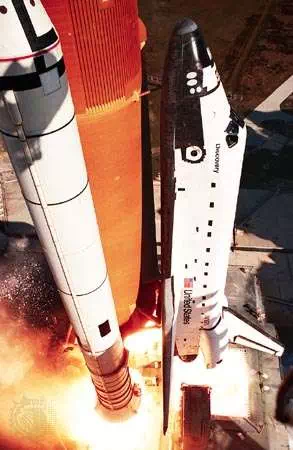
U.S. space shuttle orbiter Discovery lifting off from the Kennedy Space Center in Florida on its third mission, January 24, 1985. Also visible in the image are its attached external tank (orange) and one of its two solid-fuel boosters. Discovery was one of five operational shuttle orbiters built by Rockwell International's North American division.Johnson Space Center/NASA
Growth of the aircraft industry
American aircraft manufacturers dominated the early post-World War II years. In 1951, 80 percent of the world’s piston-engine commercial aircraft were made in the United States, and 56 percent of that American production was from Douglas. The United States, however, lagged behind Great Britain in understanding the potential of the jet airliner. In 1943 Britain had established the Brabazon Committee to assess the country’s postwar needs in civil aviation. The committee suggested nine types of aircraft, of which two were produced: the turboprop Vickers-Armstrongs Viscount, which made its first airline flight in 1950, and the De Havilland DH-106 Comet, which in 1952, with the inauguration of passenger service, became the world’s first jet airliner. The Comet was able to carry 36 passengers over a range of 3,200 km (2,000 miles) at a speed of 790 km (490 miles) per hour. A combination of technical flaws, however, caused explosions in flight and resulted in its withdrawal from service and the redesigning of subsequent versions of the Comet.
American companies learned from the design errors of the Comet. Drawing on its experience with the B-47 and B-52 jet bombers, Boeing in 1954 brought out the Boeing 367-80, the prototype of a new class of jet aircraft. Featuring an impressive combination of speed and range, the aircraft evolved into the KC-135 aerial military tanker and later into the company’s first jet airliner, the 707. Pan American Airways’s order for 20 Boeing 707s—and 25 similar Douglas DC-8s—initiated a worldwide jet-buying frenzy. In the 1960s jets also began to replace short-haul piston-engine aircraft. This time Europe—in particular British Aircraft Corporation, Hawker Siddeley, and France’s Sud Aviation—competed successfully against American manufacturers with the BAC One-Eleven, HS 121 Trident, and SE 210 Caravelle models, respectively. The French Caravelle, the prototype of which first flew in 1955, pioneered the “clean wing” design by mounting two engines, one on each side, on the rear section of the fuselage. The general aviation sector experienced an almost steady growth after 1955. The product lines of Beech, Cessna, and Piper expanded to include a wide variety of new aircraft types. In terms of production volume, Cessna emerged as the leader. By the mid 1960s general aviation aircraft also began to make use of turboprop engines, jet engines, and pressurized cabins. While American companies continued to dominate this market, increasing global demand stimulated non-American manufacturers. Japan, for example, successfully offered the medium-range Mitsubishi MU-2 turboprop, and Britain and France marketed competitive capability from Short Brothers and Sud Aviation, respectively. In the United States, William P. Lear paved the way for volume sales of business jets. His Learjet 23, the first aircraft of this type, began deliveries in 1964.
The first major cooperative venture of European countries to design and build an aircraft began on November 29, 1962, when Britain and France signed a treaty to share costs and risks in producing a supersonic transport (SST), the Concorde. The two countries were not alone in the race for a supersonic airliner. The Soviet Union built the delta-wing Tupolev Tu-144, which made its maiden flight in December 1968 and which in June 1969 was the first passenger jet to fly faster than Mach 1 (the speed of sound). The Tu-144 was in service only briefly in the late 1970s before being withdrawn for reasons that proved ultimately to be fundamental design problems. The delta-wing Concorde made its first flight in March 1969 and entered revenue service in January 1976 (see supersonic flight). British Aircraft Corporation and Aerospatiale were responsible for the airframe, while Britain’s Rolls-Royce and France’s SNECMA (Société Nationale d’Étude et de Construction de Moteurs d’Aviation) developed the engines. The Concorde’s cruise speed of about Mach 2 (twice the speed of sound) reduced the flight time between London and New York to about three hours. Although financially not profitable, the Concorde, which was taken out of service in 2003, proved that European governments and manufacturers could cooperate in complex ventures and that they remained at the technical forefront of aircraft development. In the United States the federal government was willing to pay 75 percent of the research-and-development cost of an SST. But after four years and more than $1 billion expended, with little progress and growing environmental concerns, the Boeing 2707 SST project was canceled in 1971 following withdrawal of government funding.
·
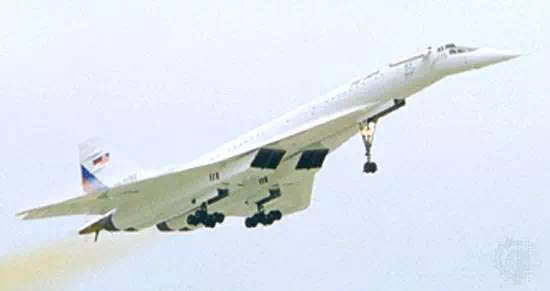
·
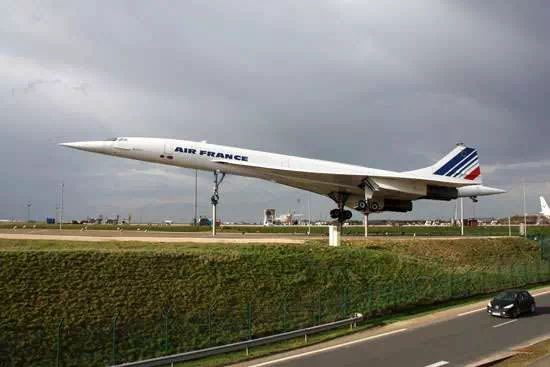
Tupolev Tu-144 supersonic passenger airliner, lifting off in Moscow in 1996 as part of flight-research tests conducted jointly by Russia and the United States. On June 5, 1969, a Tu-144 became the first passenger aircraft to break the sound barrier.
Concorde supersonic passenger transport, which first flew in 1969 and entered commercial service in 1976. British Aircraft Corporation and Aérospatiale of France built the airframe, which was powered by four Rolls-Royce/SNECMA engines.
In the 1960s Boeing and Lockheed submitted proposals to build a large transporter for the U.S. Air Force. Lockheed and engine manufacturer General Electric won the contract and developed the world’s largest aircraft at that time, the C-5 Galaxy. Boeing and its engine partner Pratt & Whitney, however, embarked on an ambitious undertaking to develop an aircraft capable of carrying as many as 500 passengers. The end product was the first wide-body passenger jet, the four-engine Boeing 747 Jumbo Jet, which entered service in 1970. Douglas and Lockheed followed suit with somewhat smaller triple-engine wide-body aircraft, the DC-10 (1971) and L-1011 TriStar (1972), with worldwide acceptance, though not profits, for all three.
·
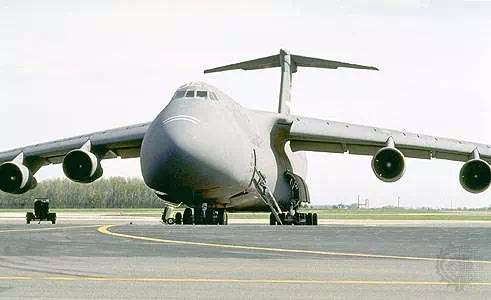
·
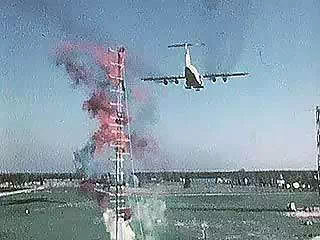
C-5 Galaxy military transporter. Developed by Lockheed and with engines by General Electric, the C-5 first flew in 1968 and was at that time the world's largest aircraft.1996-1999 Lockheed Martin Corporation
The Lockheed C-5A Galaxy undergoing a wing vortice test at NASA's Langley Research Center in Hampton, Va., c. 1970s.NASA/Dryden Research Aircraft Movie Collection
As another outgrowth of wartime aircraft development, helicoptersentered civilian service, first with the medical-emergency and police units of civil governments for rescue and transport operations and then with commercial companies for short-range passenger transportation in environments such as cities and forested areas requiring vertical ascent and descent. As helicopters achieved increased lift capabilities, they were used in construction for the economical transport of girders and other large structures. In the 1950s helicopter-manufacturing licenses were granted by Sikorsky (seeUnited Technologies Corporation) to Westland in Great Britain and later by Bell Helicopter (see Textron Inc.) to Agusta in Italy and Mitsubishi in Japan. The introduction of turbines as power plants for the rotor was led by Sud-Est Aviation and later Sud Aviation (predecessors of Aerospatiale) in France. The Sud-Est Alouette II, which first flew in 1955, was the world’s first turbine-powered helicopter to go into production. The debut of turbine-powered helicopters and their application as military attack aircraft by NATO and Soviet bloc countries and their clients marked the development of a new generation of rotary-wing aircraft. In the United States during the Vietnam War, the Bell Helicopter division of Textron developed the Bell 209 (AH-1G HueyCobra), the first helicopter designed specifically for attack. At the end of the 1960s the Soviet Union’s Mil Mi-12 became the world’s largest helicopter, with a maximum takeoff weight of 105 tons, and in 1978 the smaller Mil Mi-24 set a helicopter speed record of 368.4 km (228.9 miles) per hour.
·
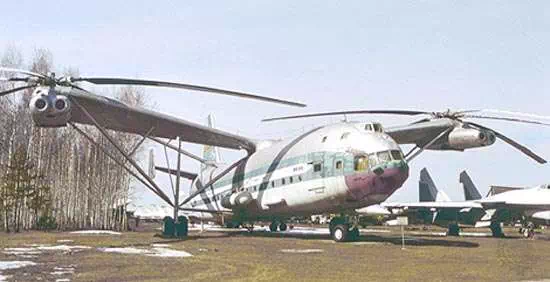
·
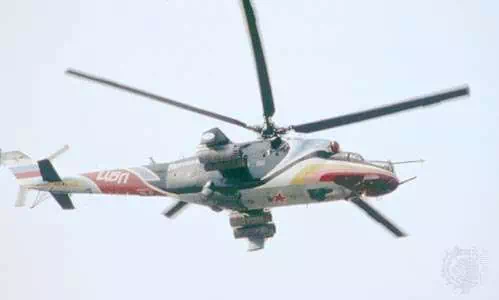
Mil Mi-12 heavy-lift transport helicopter. Powered by two pairs of turboshaft engines, the Mi-12 was the largest helicopter ever built. It was flown in the U.S.S.R. in tests during the late 1960s but never put into production.© Sovfoto/Eastfoto
Mil Mi-24 assault and transport helicopter, the prototype of which first flew in 1970. Widely exported, the aircraft is capable of carrying eight passengers in addition to its two-person crew.© Sovfoto/Eastfoto
Cooperation and consolidation in a global economy
Internationalization
In the 1960s the high development cost of wide-body jets started a trend toward international risk sharing and cost sharing in aircraft development. American firms sought foreign partners because international cooperation was not subject to antitrust regulations and provided an excellent entry into overseas markets. This kind of partnership proved particularly important for nationalized airlines that preferred to purchase aircraft whose construction involved, at least in some way, their own domestic aerospace industry. Collaboration on an international scale also was attractive in that it lessened the possibility of a participant’s canceling a project before completion, as many agreements had penalty clauses to discourage premature pullout and political pressure could be exerted from other team members. In 1969 there were worldwide about 10 cooperative ventures among manufacturers (both airframe and engine); by 1992 the number had risen close to 50.
In 1965 the French and German governments initiated discussions about forming a consortium to build a European high-capacity short-haul airliner. The outcome was Airbus Industrie, formed in 1970 as a Groupement d’Intérêt Economique (GIE; “Grouping of Mutual Economic Interest”), a unique and flexible form of partnership instituted by French law, in which the partners have a dual role as both shareholders and industrial participants. Later other European countries joined Airbus, resulting in the following distribution of ownership: Aerospatiale Matra (France) and DaimlerChrysler Aerospace (Dasa; Germany) with 37.9 percent each, BAE Systems(Great Britain) with 20 percent, and Construcciones Aeronáuticas S.A. (CASA; Spain) with 4.2 percent. In 2000 all the partners except BAE Systems merged into the European Aeronautic Defence and Space Company (EADS), which thus came to own 80 percent of Airbus. Belairbus (Belgium) and Alenia (Italy) participated in some projects. Airbus Industrie’s premier aircraft, which entered service in 1974, was the A300—the world’s first twin-engine wide-body jetliner. The consortium’s next airliner, the A310 (entered service in 1983), introduced many new concepts, among them a two-pilot cockpit (in which the duties of a third crew member, the flight engineer, were performed by computers) and extensive use of composite materials for the airframe. Its third product, the A320 (1988), was the first subsonic commercial aircraft to be designed with fly-by-wire (electric rather than mechanical) primary controls and the first commercial aircraft to feature the so-called glass cockpit, which used electronic rather than mechanical displays. Through its innovations and the growing range of aircraft offered, the European consortium became the second largest maker of commercial aircraft worldwide, deferring only to Boeing while relegating McDonnell Douglas to a distant third place by the mid 1990s (prior to its merger with Boeing in 1997). Although Airbus aircraft used many American-manufactured components, the program gave a tremendous boost to European aircraft suppliers.
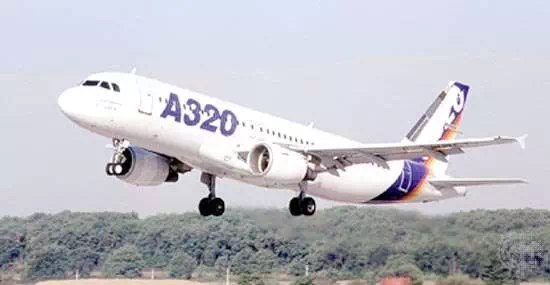
Airbus A320 short- to medium-range jetliner, which first flew in 1987 and went into commercial service the next year. The aircraft typically accommodates 150 passengers. Its success led to a family of derivative aircraft of varying passenger capacities, including the A318, A319, and A321.© Airbus Industrie
Europe’s growing involvement in space activities provided another opportunity for international cooperation. In 1962 six western European countries and Australia signed a convention leading to the formation of the European Launcher Development Organisation (ELDO) to develop the experimental heavy-lift satellite launcher Europa, based on the British Blue Streak and French Coralie rockets. A parallel effort set the stage for the establishment of the European Space Research Organisation (ESRO), devoted to scientific space programs and the construction of satellites. In the summer of 1972 the French government proposed to other European countries a new and technologically simpler launcher. The 5th European Space Conference in December 1972 proved to be a landmark for the development of a European space industry. It approved the L-3S launcher, later named Ariane, with France as a project leader, and sanctioned Spacelab, a manned research laboratory to be carried in the cargo bay of a U.S. space shuttle, this project to be led by Germany. On an organizational level it merged the parallel activities of ELDO and ESRO under the umbrella of a single organization, the European Space Agency (ESA), which came into existence in 1975.
The Ariane program involved nearly 50 companies from 11 European countries, with France’s Aerospatiale providing strong leadership. The initial version of Ariane was first launched successfully on December 24, 1979, beginning a new era in Europe. To finance and operate the Ariane rocket and to commercialize space launch services with it, ESA set up Arianespace in March 1980 and gave it responsibility for operating the launch centre in Kourou, French Guiana. Its shareholders were 36 of the principal European aerospace firms, primarily those involved in actually building the rocket, as well as 13 major European bank groups and the French space agency CNES (Centre National d’Études Spatiales). Subsequently the Ariane series became the world’s most successful commercial expendable launch vehicles. Spacelab, the second major European program, was developed by German companies in cooperation with manufacturers from Italy, France, Britain, and six other European countries. Taken into Earthorbit in the payload bay of a space shuttle, the laboratory consisted of two separate segments: a pressurized 16-ton module in which astronauts could work and supervise experiments in a shirtsleeve environment and a pallet for external payloads. Spacelab made its maiden voyage in November 1983 and more than a dozen flights thereafter.

Spacelab 1West German physicist-astronaut Ulf Merbold conducting a materials-processing experiment aboard Spacelab, carried into orbit in the payload bay of the space shuttle orbiter Columbia. The shuttle mission was launched November 28, 1983.NASA
Following the lead of the flagships of international cooperation—Airbus and Ariane—many other civil and military programs were established that involved two or more companies from different countries. In 1969 European manufacturers Messerschmitt-Bölkow-Blohm, British Aircraft Corporation, and Aeritalia (predecessor of Alenia) founded Panavia Aircraft, while European engine makers Motoren- und Turbinen-Union (MTU), Rolls-Royce, and Fiatincorporated Turbo-Union. The result of this joint effort was the successful Panavia Tornado, a multirole combat aircraft that entered service in 1980. Other European cooperations produced the French-British Jaguar fighter and the French-German Alpha Jet trainer, which entered service in 1972 and 1979, respectively. A later example, first flown in 1995, is the military transport helicopter NH-90, developed by Aerospatiale (France), DaimlerChrysler Aerospace (Dasa; Germany), and Agusta (Italy). When Boeing developed the 777 in the late 1980s and early ’90s, the company for the first time offered full partnership to some subcontractors; Japanese firms held a 20 percent share in the airframe structure and also shared market and program risks.
In the commercial engine sector, General Electric Aircraft Engines in the United States and France’s SNECMA established a joint venture, called CFM International, in 1974 for production of the widely sold CFM56 turbofan engine. International Aero Engines (IAE), formed in 1983 as a collaboration of the American firm Pratt & Whitney, Germany’s MTU, Britain’s Rolls-Royce, Italy’s FiatAvio, and a Japanese consortium, Japanese Aero Engines Corporation, produced the V2500 turbofan.
Mergers and divestitures
With a decline in defense funding and a narrowing of commercial markets in the decades following World War II, the number of business opportunities shrank, and competition for each project became more intense. In response, aerospace companies sought mergers as a way to integrate strengths, to combine talent and other resources, and to reduce costs by eliminating redundancies in administrative functions, personnel, and physical facilities. Previous competitors having complementary capabilities joined forces to expand product lines and, in some cases, to offer a more comprehensive system of services and products to potential customers.
In the 1960s, American manufacturers went through a first wave of mergers. Martin joined forces in 1961 with the nonaerospace materials firm American Marietta to form Martin Marietta Corp. Similarly, North American Aviation sought a nonaerospace partner and merged with automobile-parts supplier Rockwell Standard to form North American Rockwell Corporation (later Rockwell International Corporation) in 1967. In the same year, military manufacturer McDonnell Aircraft merged with the largely civil manufacturer Douglas Aircraft to form the balanced enterprise McDonnell Douglas Corporation. Another move involved Bell Aircraft’s becoming a part of Textron Inc. in 1960.
A second series of American divestitures and mergers began in the early 1990s. General Dynamics sold its general aviation aircraft maker, Cessna, to Textron Inc., its missile business to the Hughes Electronicssubsidiary of General Motors, its tactical fighter business to Lockheed, and its space systems division to Martin Marietta. Ford and IBM also left the aerospace-defense sector by selling their divisions to Loral in 1992 and 1994, respectively. General Electric maintained its GE Aircraft Engines subsidiary, but its aerospace division became the property of Martin Marietta in 1993. In 1994 and 1995, four well-known airframe manufacturers merged into two. Lockheed combined with Martin Marietta to form Lockheed Martin Corporation, and Northrop acquired the ailing Grumman Corporation and later the Vought Aircraft division of LTV Corporation to create Northrop Grumman Corporation. In late 1996 Boeing acquired Rockwell International’s space and defense units, and in 1997 it merged with McDonnell Douglas to establish the world’s largest aerospace company. In the same year, Lockheed Martinannounced its intention to acquire Northrop Grumman, but, in the face of objections from the U.S. Department of Defense that such a merger would result in an overconcentration of defense electronics in a single company and the threat of a federal antitrust suit, the acquisition plan was abandoned. This consolidation reduced the number of prime American aerospace companies to only two—Boeing and Lockheed Martin. In October 2000 Boeing acquired three units from Hughes Electronics—Hughes Space and Communications Company, Hughes Electron Dynamics, and Spectrolab—and Hughes’s interest in HRL Laboratories, the company’s primary research facility. These elements were combined into new subsidiary, Boeing Satellite Systems.
In the general aviation sector, most small American manufacturers lost their independence in the 1980s and ’90s and became parts of large industrial conglomerates. Beech became a subsidiary of Raytheon Company, and Cessna, as noted earlier, was acquired by Textron. Canada’s Bombardier acquired business jet makers Learjet and Canadair, as well as De Havilland Canada and Britain’s Short Brothers.
In Europe the changes were perhaps even more dramatic. In Britain, 12 companies, including well-known firms such as De Havilland, Bristol, and Supermarine were combined in a series of mergers in the 1950s and early ’60s. The resulting two manufacturers were British Aircraft Corporation and Hawker Siddeley Aviation. In 1977 these two companies and two others were taken into public ownership and reorganized as British Aerospace (BAe). In 1999 BAe signed an agreement with General Electric Company PLC (GEC) in which GEC would divest itself of its defense electronics business, Marconi Electronic Systems, which would then merge with BAe. The resulting company became BAE Systems. In France, Sud Aviation, Nord Aviation, and SEREB merged in 1970 as Aerospatiale to form the country’s strongest aerospace firm, while Dassault absorbed Breguet Aviation in 1971. In 1999 Aerospatiale merged with Matra Hautes Technologies, a subsidiary of the Lagardère Group, to form Aerospatiale Matra. Germany followed Britain and France in creating a national “aerospace champion.” Beginning in 1985, luxury-car maker Daimler-Benz (later DaimlerChrysler) acquired the aerospace group Messerschmitt-Bölkow-Blohm (MBB), Dornier, and other companies to form Deutsche Aerospace, which subsequently was renamed DaimlerChrysler Aerospace (Dasa).
The national consolidation of German aerospace companies was followed in 1990 by the merger of the space activities of France’s Matra Espace and Britain’s Marconi Space Systems to create Matra Marconi Space. The latter increased in size in 1994 with the acquisition of British Aerospace Space Systems. In May 2000 Matra Marconi Space and the space divisions of Dasa were combined in a joint venture under the name Astrium, 50 percent of which was owned by Aerospatiale Matra and BAE Systems and 50 percent by Dasa. Astrium was the first trinational space company, with facilities in France, Germany, and Great Britain. Its activities covered the whole spectrum of the space business, from ground systems and launch vehicles to satellites and orbital infrastructure. Two months later, in July, Aerospatiale Matra, Dasa, and Spain’s Construcciones Aeronáuticas S.A. (CASA) merged to create the European Aeronautic Defence and Space Company (EADS). With central offices in France and Germany, EADS at its formation became the third largest aerospace company in the world (after Boeing and Lockheed Martin).
In the United States and Europe, national governments played quite different roles in the mergers involving their countries. The U.S. government scrutinized each proposed merger for antitrust and anti-competition infringements and, in some cases, denied the merger, most notably that proposed by Lockheed Martin and Northrop Grumman. It approved the merger of Boeing and McDonnell Douglas with the recognition that survival of McDonnell Douglas’s commercial business on its own was questionable and that one strong supplier could compete more successfully with the European Airbusconsortium and maintain a favourable balance of trade. By contrast, national governments in Europe, once they overcame concerns about national pride and prestige, generally encouraged mergers in order to enhance Europe’s combined ability to supply its economic union with products and compete with the United States for commercial and defense contracts. In addition, the critical mass afforded by these mergers provided a basis for negotiating with the United States for European roles in major aerospace projects such as the International Space Station.
The aerospace industry of the former Soviet Union, particularly the defense and space sectors, absorbed a significant portion of the country’s overall budget. Following the dissolution of the U.S.S.R. in 1991, its design bureaus, which were confined to Russia and Ukraine, represented the resources for the development of all aircraft and space systems. They stayed largely intact, continuing to develop advanced products while making individual partnering and marketing arrangements for aerospace vehicles and technology with the industries of Western countries, China, and India. At the same time, they supplied a dwindling market in Middle Eastern client states such as Syria and Iraq. At the start of the 21st century, negotiations were under way with the aim of merging the aircraft-oriented and space-oriented bureaus into single corporations.
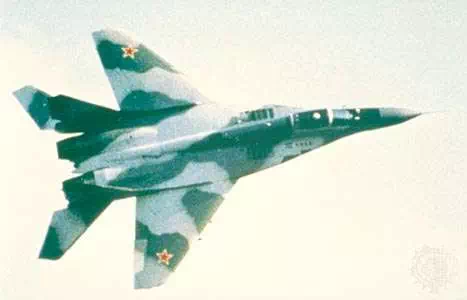
MiG-29, a Russian twin-engine attack light interceptor. The first prototype flew in 1977. Modern variants of the aircraft are widely exported.© Sovfoto/Eastfoto
Recognizing the competitive status of its military aircraft and space launchers in the world market, Russia, in conjunction with those former Soviet republics having aircraft and space-related facilities, sustained these activities despite countervailing economic pressures. It successfully marketed MiG and Sukhoy fighters to Third Worldcountries and formed partnerships with American and European firms in new aircraft and satellite-launcher ventures and with NASA in its manned space program—in particular, the joint effort on the International Space Station. It should also be noted that as the Soviet Union developed advanced military aircraft in the 1970s and ’80s, earlier designs such as the MiG-25 series were licensed for production to Eastern bloc partners such as Poland and the German Democratic Republic. Even older designs of the 1950s, the MiG-17 and MiG-19, were made available to China, which developed its own industry around versions of these aircraft. (For additional information on Russian design bureaus, see Energia; Tupolev.)